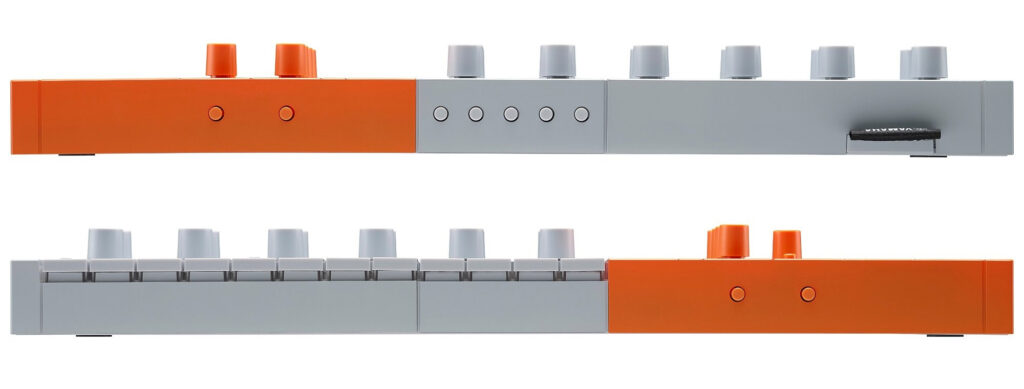Yamaha is a mainstay in the electronic music production world, but it’s probably best known for its stage synthesizers and studio monitors. Now, with the company’s SEQTRAK (“Search Track”) groovebox, that may change. Let’s get the obvious out of the way first, yes, this looks a lot like Yamaha having a meeting and deciding to tackle Teen Engineering head-on. The SEQTRAK (RIP my shift key) draws a lot of inspiration from the Swedish company’s OP-Z portable studio, it even borrows the gray and orange aesthetic favored by the company (although the SEQTRAK also comes in dark grey/black).
SEQTRAK includes a drum machine, sampler, FM and sample-based synthesizer and semi-eponymous sequencer as well as a built-in battery (estimated play time of 3-4 hours) and built-in speakers, making it a portable standalone device. It also comes with a multi-platform (Windows, Mac, iOS, and Android) companion app that allows for more visual control, deeper settings, additional sounds, and even video visualization tools. Wireless and physical MIDI plus USB connectivity for the built-in interface are expected to make it a versatile portable creative machine that can also sit on your desk.
The drum section offers seven tracks, each of which can hold up to six sounds. A variety of percussion samples come pre-installed and can be tweaked and changed to suit your taste, then fed into the sequencer section below. Pattern lengths are up to 128 steps/8 bars, while the sub-step feature lets you trigger sounds multiple times on the same step to create flourishes and fills based on your beats.
Given the company’s heritage in synthesizers, it’s no surprise that the DX series has made a strong impact here. SEQTRAK’s FM synthesizer has four operators and eight note polyphony. Meanwhile, the company’s long-standing “AWM2” sample-based synthesis engine has been scaled down for SEQTRAK and goes all out, with a maximum polyphony of 128. If you prefer straight samples, you can get 16-bit/44.1kHz sound using the built-in mic, USB, auxiliary input, and even resample what you’re playing.
The SEQTRAK’s footprint is a bit taller than the slender OP-Z or even the larger OP-1 Field, but its silhouette is still clear. The step sequencer/keyboard section benefits from the extra space, although it will be interesting to see how well the keys adapt to the performance. The lack of a display isn’t unusual in this form factor, and of course the apps are there if you need them (again, much like the OP-Z). Many of you may remember the QY series of portable workstations, and their spirit is still there, but with an interesting new design direction. No doubt there will be plenty of comparison videos produced with its Teenage Engineering competitors once it launches (no word on when exactly yet).
One major difference from the OP-Z is the price. While you can buy one of these for $499, it will cost $599 at launch. However, SEQTRAK is available for pre-order at retailers for $399, which is a pretty good deal. Of course, there are many differences between them. For one, the slightly larger footprint will appeal or detract depending on your needs and playstyle. The OP-Z is indeed portable, but its setup and performance are very “hunt and peck”. The sampler credentials on the SEQTRAK are also more powerful than on its Swedish rival, with 500MB of space as opposed to the OP-Z’s 24MB (or 64MB on the dedicated KO II sampler).
Is this enough to gain the same number and level of fans? Only time will tell. You can register your interest in SEQTRAK now and look forward to more news during the NAMM show next week (we’ll be there!).
This article was originally published on Engadget: https://www.engadget.com/yamaha-seqtrak-groovebox-134545480.html?src=rss
Source link
